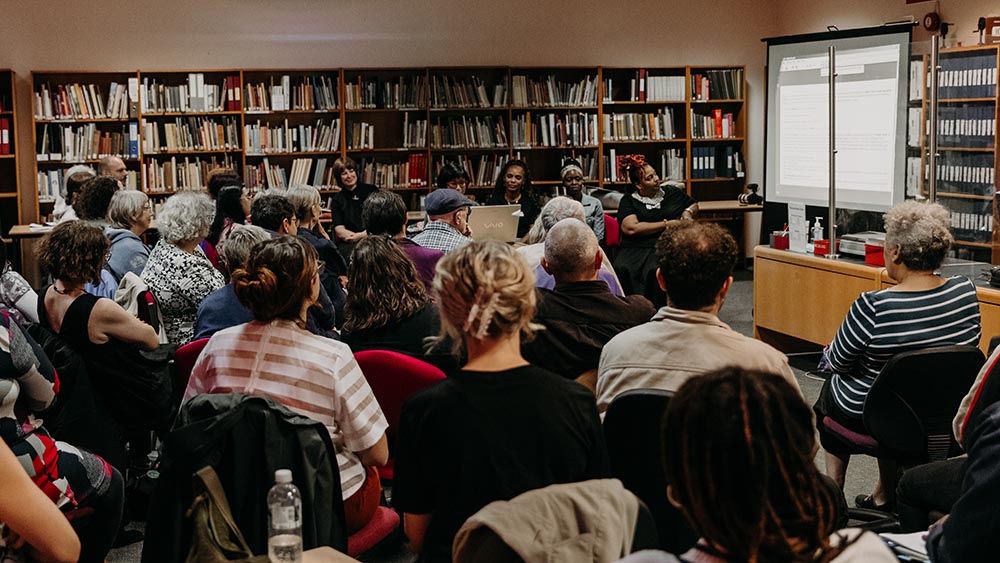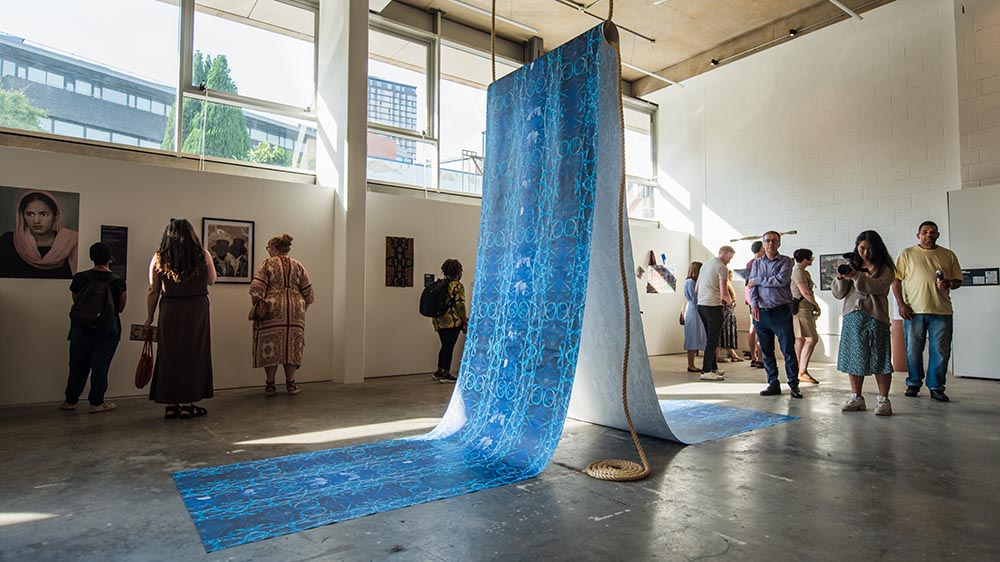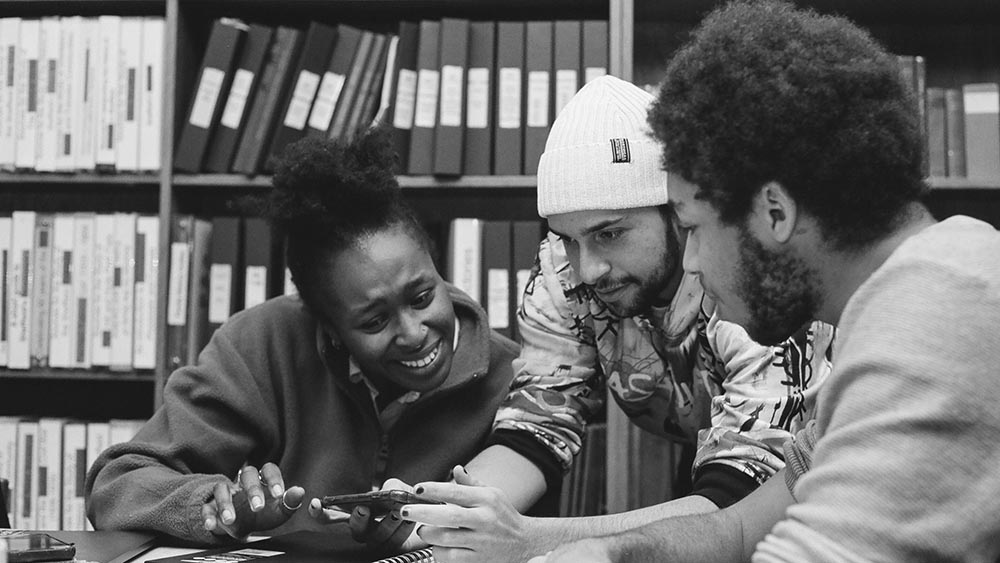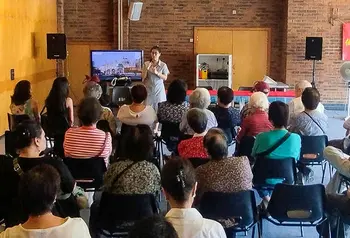How artists can uncover hidden histories and fill gaps in the archives

The breadth of archives depends on who’s doing the recording and what they consider worth keeping. Historically, people of colour have not figured at the top of the priority list.
But, as Alex Rajinder Mason says: “With an artistic sensibility, there’s a lot of potential in the archival gaps. You can draw out a story and speculate what a person’s life might be like through artistic expression.”
Alex is the project manager of Dig Where You Stand, which we awarded £112,000 in 2023. It was conceived by creative director Désirée Reynolds in 2021 during a stint as writer in residence at Sheffield City Archives, born from her frustration at the lack of evidence of black working-class people she found.
Our funding has helped them bring 14 artists into the archives to explore and expand upon the fragments of records and fleeting mentions of African, Caribbean, East Asian and South Asian people who made Sheffield their home.
“We wanted to bring as many people of colour into the archive as possible, have each person bring their own sensibility, cultural interest and expertise. The more people we brought in, the more stories that were likely to be uncovered and the different ways in which they might be interpreted, leading to a much richer accounting of people that had been in South Yorkshire over hundreds of years,” Alex says.

Taking archival stories to the streets
One of those artists was Eelyn Lee, who is of Hong Kong and English heritage. It was her first time exploring an archive.
“Once you start digging, there’s so much richness there and it takes you on really unexpected journeys. What I discovered was quite a revelation,” she says.
It started with the 1855 entry in a parish register for ‘A. Chow’, a British-born Chinese baby buried in St Paul’s churchyard (which no longer exists). She obtained the child’s death certificate, which featured the father’s name, 德貴 [Teh Kwei aka Tuck Guy] and listed his occupation as magician.
“It was amazing, a line in a register led me to a man’s name written by his own hand, and on to the story of Chinese magicians who toured across this country, Ireland, France. I ended up connecting with an academic in Canada who’s done a lot of research on the topic, and we’ve been sharing information that neither of us previously knew. It’s really exciting.”
Eelyn’s artistic response was a street procession in collaboration with other East and South East Asian creatives. They developed a new mythological character who embodied the spirit of the Chinese magicians, honoured them as ancestors and honoured the baby who was buried in Sheffield. Participants were invited to bring pictures of their ancestors to carry in the procession as placards.

The procession embodied the emotion Alex says is one of the aims of Dig Where You Stand.
“We want to connect with audiences in an emotive way, to make them feel the personhood of the individuals we’re finding out about and show these were normal yet complex people with full lives. What we’re doing is really impactful.”
Attracting new audiences to heritage
The response to the artistic outputs – which range from poetry, portraiture and puppetry, to music, film and textiles – has been as positive as the interest from people wanting to take part in other ways. Dig Where You Stand is also providing archive training for women of colour (the second cohort of trainees start at the end of the year), practical workshops, discussions and educational resources (which will be available online soon on the Dig Where You Stand website).
Alex says: “Historically, archives haven’t got much engagement from racially marginalised groups. Part of our job is to make the archives feel more accessible to people of colour, allow people to feel a bit more comfortable in those spaces and be able to navigate them.”
And it’s working.
“We’re seeing a greater interest from people wanting to learn how to access the archives, and a lot of artists wanting to be part of this work. But the thing I’ve noticed most is the interest from schools and community groups who want to engage with the work, want us to come and give talks and run workshops so they can learn about heritage,” he says.
“There’s a lot of interest in this story of racialised heritage from all sorts of audiences. That’s really motivating because it makes us feel like we’re just scratching the surface and there’s much more work than can be done and it will be received well.”

Tips for other archive projects
Alex and Eelyn both agree that the key to the project’s success has been openness.
“Sheffield City Archives really bought into, became part of, Dig Where You Stand. Without their openness, this project wouldn’t work. They hold so much information, they have the expertise to help guide us through it,” Alex says.
Offering advice to other archives considering a similar project, he says: “There has to be a will from the archives, and they have to value those marginalised voices. Archives should seek out people in the community who have an expertise around this area and provide the resource that allows them to explore and run with it. That’s what’s allowed us to grow so quickly in the space of a few years.”
On inviting creatives into archives, Eelyn offers: “Be prepared for the unexpected and create a framework of support that doesn’t shut anything down, because there are so many closed doors to be opened, but we aren’t going to know what those doors are at the beginning of the process.”

Got an idea?
Explore more heritage projects we’ve funded in archives and other collecting institutions and see how we might be able to support your idea.


